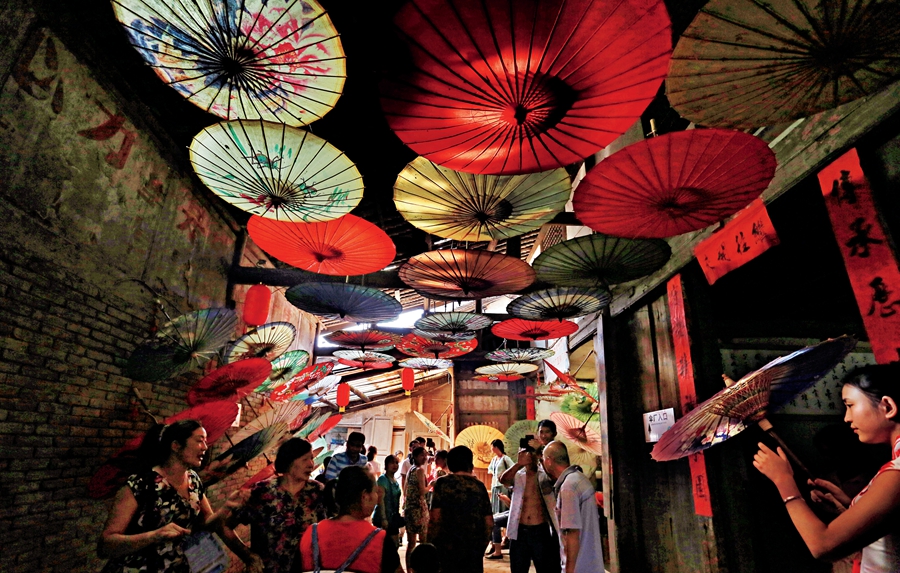Oil-Paper Umbrella: Artwork and Accessory
China Today,May 28, 2018 Adjust font size:
Oil-Paper Umbrella in Luzhou
In the past, the shops making oil-paper umbrellas were everywhere around the country. By the 1970s, oil-paper umbrellas were still used by some Chinese families. However, in the 1980s, the mass-produced nylon umbrella supported by metal ribs gradually replaced the hand-made oil-paper umbrella. Since the production of traditional oil-paper umbrellas requires skilled, time-consuming manual labor, resulting in higher costs, not many are involved in production nowadays. Today only a few places in China still produce such umbrellas and Fenshuiling Town of Luzhou City, Sichuan Province, is one of them.
Luzhou City sits in a transitional area between Sichuan Basin and the Yunnan-Guizhou Plateau, and abounds in rainfall and bamboo trees. The city has an illustrious history of over 400 years producing oil-paper umbrellas. In the 1940s, there were still over 100 factories making oil-paper umbrellas, with more than 10,000 people engaged in the profession. In the 1990s, the number of both factories and employees decreased sharply. In the past decade, people have gradually recherished the history and culture of oil-paper umbrella. As there is increasing number of people who like traditional umbrellas, its production in Luzhou has seen rejuvenation.
The typical color of the Luzhou-style oil-paper umbrella is red. To make such an oil-paper umbrella, the makers need to choose tortoise-shell bamboo (Phyllostachys edulis) which features good resilience. The bamboo needs to be treated in advance to prevent mold and damage by worms. A special cotton paper with high tensile strength is chosen for making the umbrella cover, which is painted with patterns such as flowers, birds, human figures, mountains, and rivers. The final step is to spread the tung oil evenly across the umbrella surface. Such oil-paper umbrella is very durable: it won’t crack, discolor, and become out of shape under blazing sun or heavy rain; it can be opened and closed for at least 3,000 times; its surface won’t separate from the ribs even if it is soaked in water for 24 hours. In addition, it can block harmful ultraviolet rays.
The traditional craft of making an oil-paper umbrella involves over 70 procedures of totally manual production. In general, it can be divided into five main steps: (1) Bamboo is selected. (2) The bamboo is crafted and soaked in water. It is then dried in the sun and assembled into a skeleton. (3) Paper is cut and glued onto the skeleton, and patterns are painted onto the umbrella. (4) The umbrella cover is oiled and exposed to sunlight. (5) Colorful cotton threads are used to fasten the skeleton and a handle is fixed. To make such an umbrella takes half a month even for an experienced craftsman. It also depends on the weather conditions. It will affect the formation of skeleton and smoothness of umbrella cover if the sunlight is too strong or if the moisture content of the air is too high due to constant drizzling.
The most representative Luzhou oil-paper umbrella is the one whose skeleton threaded with threads of various hues. Such craftsmanship is especially sophisticated, with more than 2,500 stitches, all done manually. Even in Luzhou, few craftsmen master this technique. Such well-crafted umbrellas were only offered to the imperial court in the past. When the umbrella is opened, those colorful threads form a pattern that resembles a blossoming peony, an aesthetically pleasing art that reflects the charm of traditional folk craftsmanship.
In 2008, the Luzhou oil-paper umbrella was included into the list of national intangible cultural heritage. In recent years, they have been sold to foreign countries and regions such as the U.K. and Japan.

